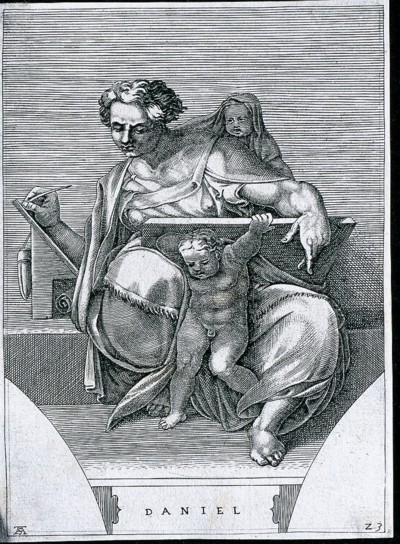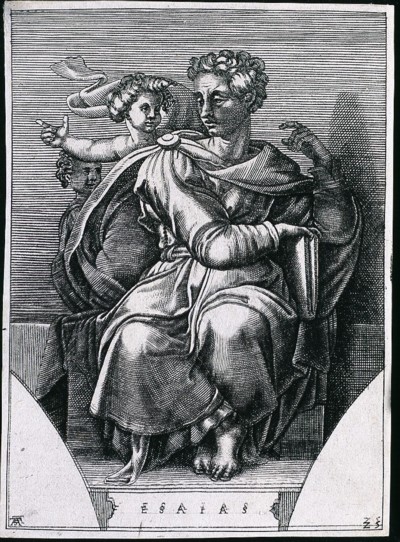Biblical Figures
The Hebrew Bible (also known as the Tanakh or the “Old Testament”) is an important document in the history of the idea of liberty, as well as the history of religion. This page contains several images of prominent figures in the work.
For more on the connection between religion and the idea of liberty, see this collection in the OLL.
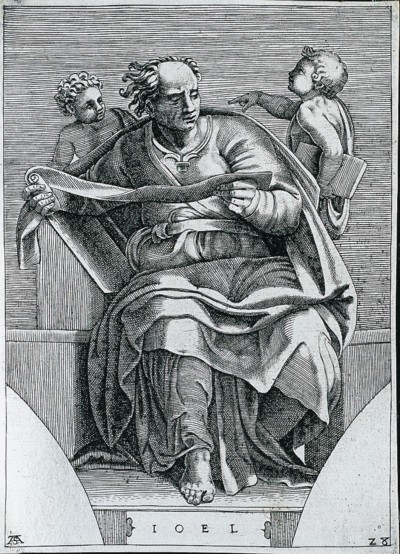 This image depicts the prophet Joel ben Pethuel (son of Pethuel). Joel’s prophecy is recorded in the eponymous book of the Hebrew Bible, and is noted among scholars for its protoapocalyptic imagery and themes. Take, for example, Joel 2: 1-2, “Blow the trumpet in Zion; sound the alarm on my holy mountain! Let all the inhabitants of the land tremble, for the day of the Lord is coming, it is near—a day of darkness and gloom, a day of clouds and thick darkness!” |
|
This image depicts Daniel, another prophet of the Hebrew Bible, who is perhaps remembered most for the story of his being saved—“delivered”—from King Darius of Persia’s den of lions. While scholars interpret the story of Daniel as having a clearly “legendary character,” in historical fact the book of Daniel probably was written and transmitted to help communities of ancient Jews endure state-sanctioned persecution during the reign of Antiochus IV Epiphanes, Seleucid ruler of Syria, in the second century BCE.
|
|
“Esaias” is the New Testament Greek translation of “Isaiah,” one of the most prominent prophets of the Hebrew Bible—even though, according to the best available scholarship, the Book of Isaiah is the joint composition of multiple prophetic individuals. Nevertheless, these individuals understood prophecy in broadly similar theological terms, leading to a work that (with the help of some later editing) arcs steadily from visions of impending judgement to forecasts of salvation.
|
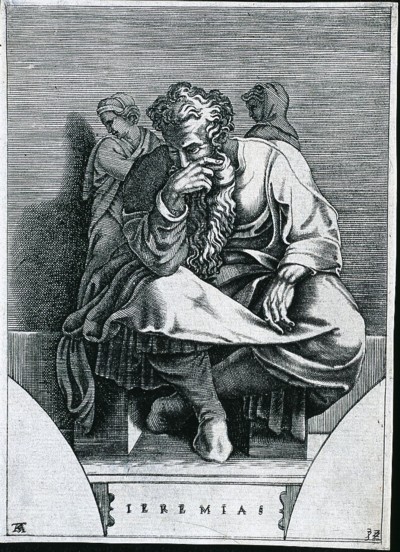 “Ieremias” is the New Testament Greek translation of “Jeremiah,” another major prophet of the Tanakh. Jeremiah warns his people (the people of Israel) that they have seriously erred from God’s ways, and implores them to repent. The structure of Jeremiah’s prophecy became such a compositional model that, even today, we still speak of biting social criticism that warns of impending doom as an example of “Jeremiad.”
|
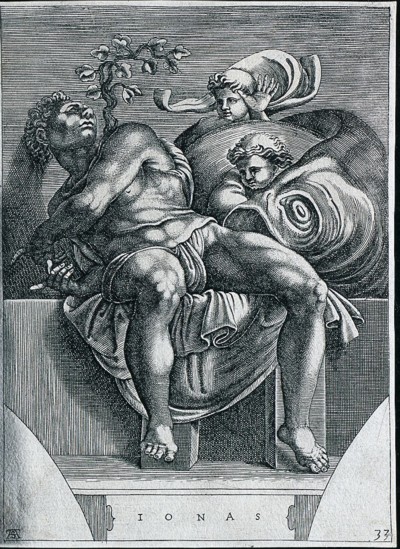 “Ionas” is the New Testament Greek translation of Jonah or Jonas, another of the major prophets of the Hebrew Bible. According to scripture Jonah was called upon by God to leave his home and preach warnings to the people of Ninevah. Instead, Jonah boards a ship elsewhere, before being thrown overboard and swallowed by a large fish. After three days, he finally agrees to go to Ninevah, and is subsequently deposited onto the shore by the fish. Jonah’s trials and tribulations continue, but his story as a whole is often interpreted as a reminder of God’s watchfulness, power, and forgiveness.
|
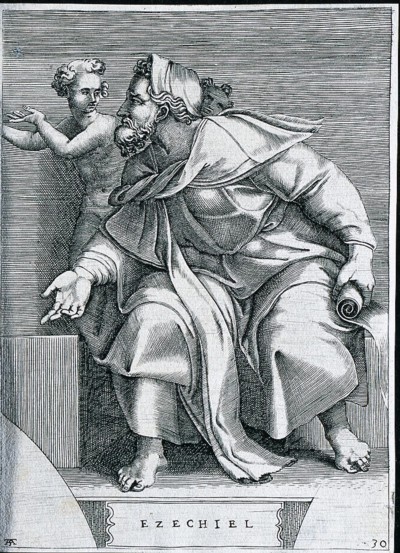 Finally we come to “Ezechiel,” another significant Biblical prophet. Ezekiel, like many of the other prophets in this collection, speaks about the judgement of Israel, the coming judgement of other nations, and how God will ultimately reward Israel if the people return to holiness and remain steadfast in their devotion. The Book of Ezekiel and the historical person it is based on remain important to adherents of Judaism, Islam, and Christianity, and the work is often celebrated by practitioners of mysticism.
The information for this page is drawn from the Harper Collins Study Bible (NRSV), an edition of the Bible endorsed by leading scholars of religion. |
